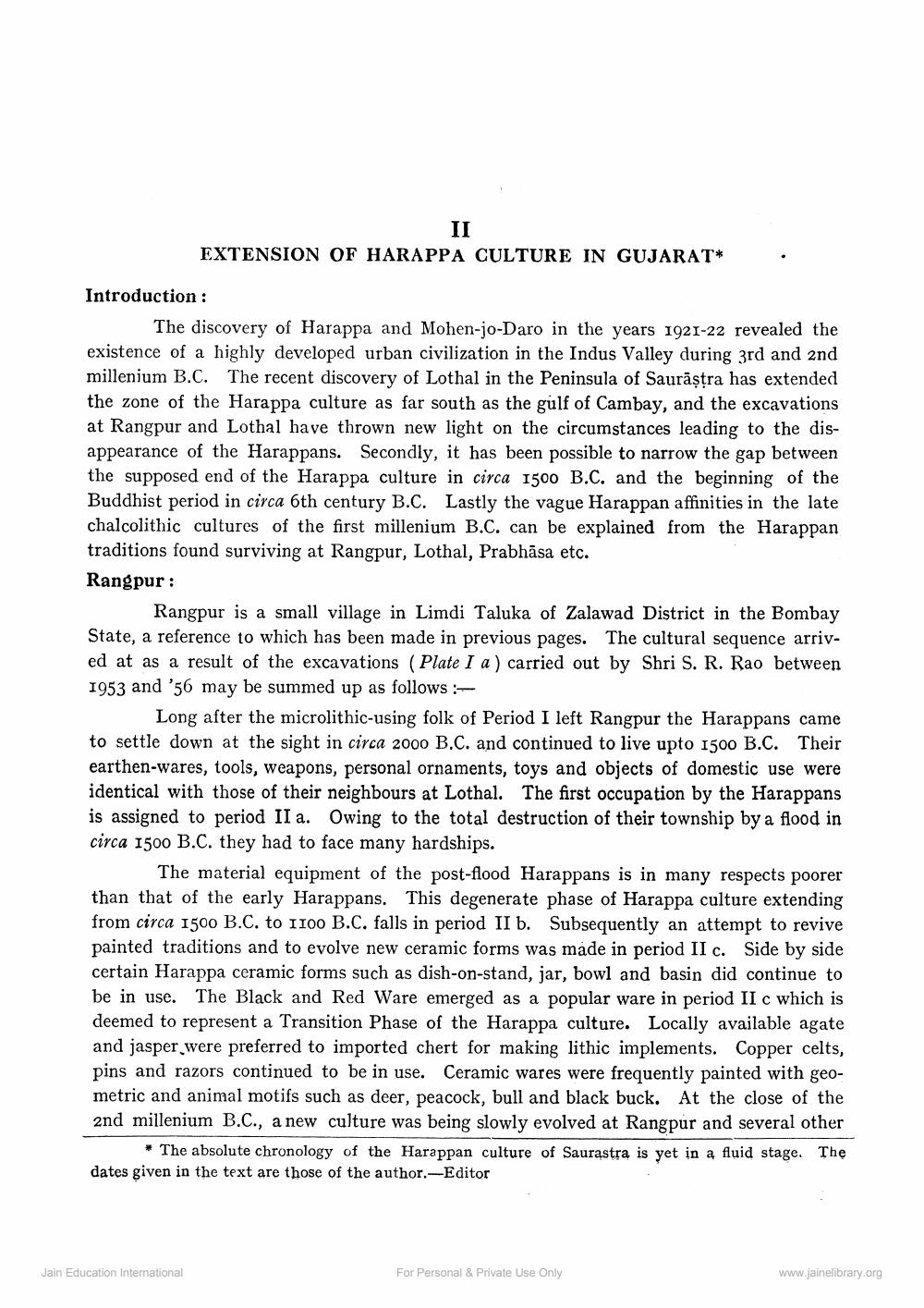________________
II
EXTENSION OF HARAPPA CULTURE IN GUJARAT*
Introduction :
The discovery of Harappa and Mohen-jo-Daro in the years 1921-22 revealed the existence of a highly developed urban civilization in the Indus Valley during 3rd and 2nd millenium B.C. The recent discovery of Lothal in the Peninsula of Saurästra has extended the zone of the Harappa culture as far south as the gulf of Cambay, and the excavations at Rangpur and Lothal have thrown new light on the circumstances leading to the disappearance of the Harappans. Secondly, it has been possible to narrow the gap between the supposed end of the Harappa culture in circa 1500 B.C. and the beginning of the Buddhist period in circa 6th century B.C. Lastly the vague Harappan affinities in the late chalcolithic cultures of the first millenium B.C. can be explained from the Harappan traditions found surviving at Rangpur, Lothal, Prabhasa etc.
Rangpur:
Rangpur is a small village in Limdi Taluka of Zalawad District in the Bombay State, a reference to which has been made in previous pages. The cultural sequence arrived at as a result of the excavations (Plate I a) carried out by Shri S. R. Rao between 1953 and '56 may be summed up as follows:
Long after the microlithic-using folk of Period I left Rangpur the Harappans came to settle down at the sight in circa 2000 B.C. and continued to live upto 1500 B.C. Their earthen-wares, tools, weapons, personal ornaments, toys and objects of domestic use were identical with those of their neighbours at Lothal. The first occupation by the Harappans is assigned to period II a. Owing to the total destruction of their township by a flood in circa 1500 B.C. they had to face many hardships.
The material equipment of the post-flood Harappans is in many respects poorer than that of the early Harappans. This degenerate phase of Harappa culture extending from circa 1500 B.C. to 1100 B.C. falls in period II b. Subsequently an attempt to revive painted traditions and to evolve new ceramic forms was made in period II c. Side by side certain Harappa ceramic forms such as dish-on-stand, jar, bowl and basin did continue to be in use. The Black and Red Ware emerged as a popular ware in period II c which is deemed to represent a Transition Phase of the Harappa culture. Locally available agate and jasper were preferred to imported chert for making lithic implements. Copper celts, pins and razors continued to be in use. Ceramic wares were frequently painted with geometric and animal motifs such as deer, peacock, bull and black buck. At the close of the 2nd millenium B.C., a new culture was being slowly evolved at Rangpur and several other
Jain Education International
The absolute chronology of the Harappan culture of Saurastra is yet in a fluid stage. The dates given in the text are those of the author.-Editor
For Personal & Private Use Only
www.jainelibrary.org




